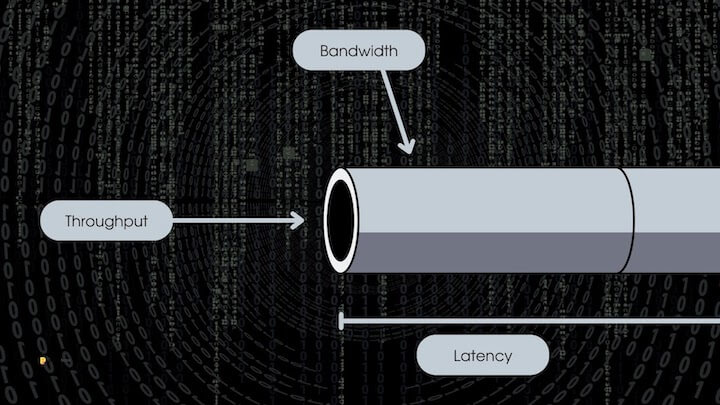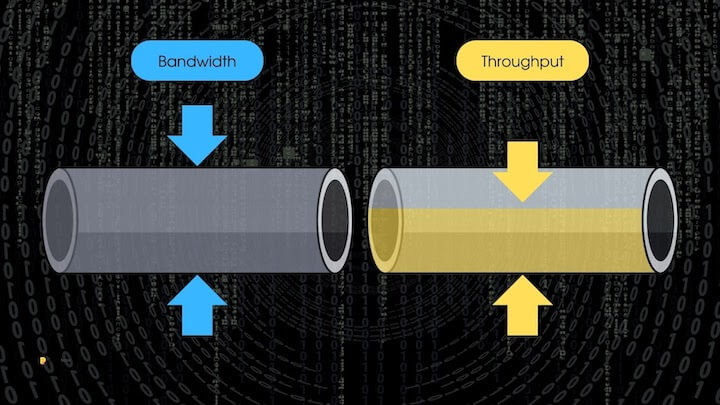Proxy Performance Metrics Guide: A Deep Dive into Latency, Throughput, and Reliability

Proxies have become unsung heroes in a world where the Internet powers our daily lives, ensuring our online experiences are fast, secure, and reliable. But have you ever wondered how these digital guardians perform their magic? Welcome to a beginner-friendly guide that will take you through the intriguing realm of proxy performance metrics.
Whether you’re a tech novice curious about the inner workings of the web or a seasoned user looking to optimize your online activities, this guide is tailored just for you. So, buckle up as we venture into the world of proxies, unraveling the key metrics that define their effectiveness. Let’s dive in, shall we?
Starting with Latency

I promise this will be easy. So, latency is the delay or time lag when data travels between your device, the proxy server, and the target server you’re trying to access. That is it.
Alright, in simpler terms, it’s the time it takes for your request to reach the proxy server and the response from the target one to travel back to you through the proxy.
Understanding the speed factor
Imagine you’re sending a request to load a webpage…
- This request first travels to the proxy server.
- Then the proxy server forwards it to the actual website server.
- The website server processes the request, generates the webpage, and sends it back to the proxy server, which finally sends it to you.
All these back-and-forths incur some time, and that’s what latency measures.
Think of latency like the time it takes for a message to travel from your end to a friend and back, with your friend living on the other side of town. If your friend is right next door, the message arrives almost instantly. But if they’re far away, it might take a while. The same principle applies to data traveling across the Internet.
Why does latency matter?
Latency is crucial because it directly impacts the speed and responsiveness of your online activities, which can be super important in ma-a-any cases. Low latency means quick interactions, essential for activities that demand real-time communication. For instance!
- Gaming: In online gaming, low latency is vital. A delay of even a fraction of a second can mean the difference between a successful parry and a situation when a boss grabs your… arm! BTW, if you need some good gaming proxies, here are our top 7 Best Proxies for PS5 in 2023.
- Video conferencing: When you’re on a video call, low latency ensures smooth communication with minimal delays between speakers, making conversations feel more natural. High latency can make you miss some important takes!
- Browsing: Faster latency means webpages load quicker. As a rule, that is not so detrimental unless you need an instant response when googling during a test in class (do not). If latency is high, you might experience delays in loading images and content, leading to a slower browsing experience.
Measuring and minimizing latency
Latency is usually measured in milliseconds (ms).
It’s important to note that various factors contribute to latency, including the physical distance between your device and the proxy server, network congestion, and the speed of the target server. You can easily get almost instant check results by using a free testing program. As a rule, good services have specific proxy checkers you can use for free when you buy those services.
While you can’t eliminate all latency due to the nature of data transmission, you can take steps to minimize it!
- Choose proxies wisely: Opt for proxies that are geographically closer to you. That reduces the distance data needs to travel, decreasing latency.
- Use high-speed connections: A faster internet connection generally results in lower latency.
- Quality proxy providers: Reputable providers often have well-maintained servers with optimized routing, helping to keep latency in check. You can visit our proxy service review section to find the most affordable and effective ones!
Network Throughput Explanation Time

In computer networks and online communication, network throughput, often simply referred to as “throughput,” describes the rate at which messages or data are delivered over a communication channel. Specifically, in our context, we’re talking about how efficiently data travels through Internet channels.
Factors affecting throughput
Several factors influence the throughput of a communication system. These factors include…
- The limitations imposed by the physical medium (the actual cables, wireless signals, etc.)
- The processing power available within the system’s components
- User behavior, and more.
Additionally, when considering various protocol overheads (extra data required for communication), the actual useful data transfer rate, called “goodput,” can be significantly lower than the maximum possible throughput.
Understanding key concepts
- Maximum theoretical throughput: This is the absolute peak data transfer rate that a communication channel could theoretically achieve under ideal conditions, often constrained only by the laws of physics and technology.
- Asymptotic throughput (aka “long-term throughput”) refers to the average throughput as the system operates over a long period, smoothing out short-term fluctuations.
- Peak measured throughput: The highest actual throughput achieved during a specific time frame. That might be a fleeting moment of optimal performance.
- Maximum sustained throughput: This represents the highest average throughput a system can consistently maintain over an extended period.
Why does throughput matter?
Throughput is critical because it determines how quickly data can be transmitted and received. So, it defines how much digital information can flow within a given timeframe. This metric is vital for tasks like:
- Streaming high-quality videos without buffering.
- Downloading large files quickly.
- Maintaining smooth online gaming experiences.
- Conducting video conferences without disruptions.
Measuring throughput: simplified explanation
Determining throughput involves looking at the rate at which data packets arrive and depart in a communication system. That is where queueing theory comes into play. Imagine a line at a ticket counter: how many tickets are coming in (arrival rate, denoted as λ) and how many are being processed and served (departure rate, denoted as μ). The difference between arrivals and departures gives you an idea of the network’s capacity to handle data.
Simply put, if data arrives faster than it can be processed, bottlenecks can occur, leading to slower throughput, just like queues for the Barbie movie when it appeared on big screens. Conversely, smoother and faster data flow is achieved if the system can process data faster than it arrives.
Measuring throughput can involve using specialized tools and software that simulate data transfer scenarios and monitor how quickly data moves between devices. These tools provide insights into a network’s performance and potential areas for improvement.
In summary to the point, network throughput is all about the speed at which data moves within the digital highways of the Internet. Understanding it helps us grasp how efficiently we can send and receive information, influencing everything from online streaming to file sharing and real-time communication.
Proxy Reliability: Ensuring a Trustworthy Connection
That is a beacon of trustworthiness, ensuring your online experiences remain stable and consistent. So, let’s delve into the proxy reliability concept, unveiling its importance and the factors that shape it, and this small lecture will be done! (Almost done, to be more precise!)
Understanding proxy reliability
Reliability refers to the ability of a proxy server to provide dependable and uninterrupted service consistently. Like a reliable friend, who you can count on, a dependable proxy ensures that your requests are forwarded to their intended destinations, and responses are reliably relayed back to you.
Factors influencing reliability
Of course, several factors impact the reliability of a proxy server. We will look at the most “popular” of those.
- Server uptime: That is the duration a server remains operational. A proxy with high uptime ensures that it’s available whenever you need it, minimizing disruptions.
- Network stability: A stable and robust network connection is vital for consistent proxy performance. Network hiccups or downtime can result in unreliable service.
- Server load: If a proxy server is overloaded with too many requests, it might slow down or become unresponsive, affecting reliability.
- Maintenance and updates: Regular updates ensure the proxy server remains secure and performs optimally. Poorly maintained proxies might suffer from security vulnerabilities or unexpected downtime.
The Importance of reliable proxies
Reliable proxies play a pivotal role in various online activities!
- Business operations: Companies rely on proxies for secure access to sensitive data and resources. An unreliable proxy can disrupt workflows and compromise security.
- E-commerce: Online shopping platforms require steady connections for seamless browsing, ordering, and payment experiences.
- Content delivery: Reliable proxies enhance content delivery networks (CDNs), ensuring that websites and media load quickly and consistently.
- And much more.
What about measuring proxy reliability?
Assessing proxy reliability involves examining uptime statistics and monitoring the server’s response time.
- Uptime measures how long the proxy server remains operational without interruptions.
- Response time gauges how quickly the proxy processes and forwards requests.
Imagine you’re assessing a friend’s reliability in meeting you for an event. You’d look at how often they show up on time and how responsive they are to your messages. Similarly, in proxy reliability, you examine how consistently the server operates and how efficiently it handles your requests.
A Short Guide to Finding Reliable Proxies with Low Latency and High Throughput
Navigating the vast realm of proxy options can be overwhelming, but fear not! We’re here to provide a concise guide on identifying reliable proxies that ensure low latency and impressive network throughput. Follow these steps to enhance your online experience:
👉 Step 1: Determine your needs
Begin by clarifying your usage requirements. Are you a gamer seeking low-latency connections? Or do you need high throughput for streaming and downloading? Identifying your priorities always helps you narrow down your proxy options!
👉 Step 2: Research reputable proxy providers
Look for well-established proxy providers known for their reliability. Search for user reviews and recommendations to gauge the satisfaction of other users — reviews on TrustPilot and Sitejabber can be enough, but I would also look at what Reddit says. Established providers often have optimized servers contributing to low latency and high throughput. Moreover, legit proxy services always have additional tools you can use for free to check your server’s performance!
👉 Step 3: Choose server locations wisely
Opt for proxy servers that are geographically close to your physical location. Proximity reduces the physical distance data needs to travel, minimizing latency. So, a server somewhere in Japan when you reside in France will not help greatly. Hence, select servers strategically based on your usage patterns.
👉 Step 4: Investigate server uptime
Reliable proxies should offer high server uptime, indicating consistent availability. Many providers publish uptime statistics on their websites. Look for proxies with uptime percentages close to or exceeding 99%; it must be good!
👉 Step 5: Test response time
Response time measures how quickly a proxy processes and forwards your requests. Some proxy providers offer tools to test this metric. Aim for proxies with low response times, as quicker processing contributes to reduced latency.
👉 Step 6: Inquire about server load
Excessive server load can lead to sluggish performance and increased latency. Inquire with the proxy provider about their server load management strategies, as well-maintained servers ensure smoother operations. As a rule, you can use chats on privy service websites! Another option is, yet again, going to the thickets of Reddit to find the answer.
👉 Step 7: Check for quality network infrastructure
Proxies operating on robust network infrastructure are more likely to deliver high throughput. Investigate whether the provider has invested in advanced networking technologies to ensure reliable and fast connections.
👉 Step 8: Read the fine print
Before committing to a provider, carefully read their terms of service and user agreements. Look for any clauses that might affect reliability, latency, or throughput. Transparency is a sign of a trustworthy provider, too!
👉 Step 9: Test performance
Consider starting with a trial period or a smaller package to assess the actual performance of the chosen service. Monitor latency and throughput during activities like browsing, streaming, and gaming.
👉 Step 10: Stay informed
Even after choosing a solution, stay informed about any updates or changes affecting its reliability, latency, or throughput. Regularly assess your chosen proxy’s performance to ensure it meets your needs!
Embrace the Digital Frontier with Confidence: A Journey through Proxies
In this journey through the intricacies of proxies, we’ve unraveled the mysteries behind latency, throughput, and reliability! As you stand on the threshold of the digital frontier, armed with knowledge about proxy performance, you’re equipped to make informed choices. The choices you make about proxies can elevate your online interactions, ensuring quick, secure, and dependable connections that enhance every facet of your digital life.
Best of luck with your server choices, and happy whatever you will be doing using these!
